#i tried throwing hints throughout the story that yes the gods are doing the equivalent of making two dolls kiss
Text





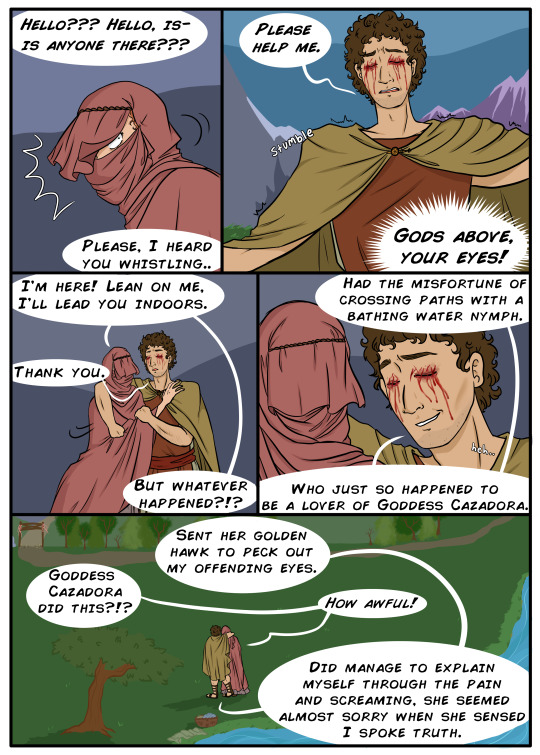
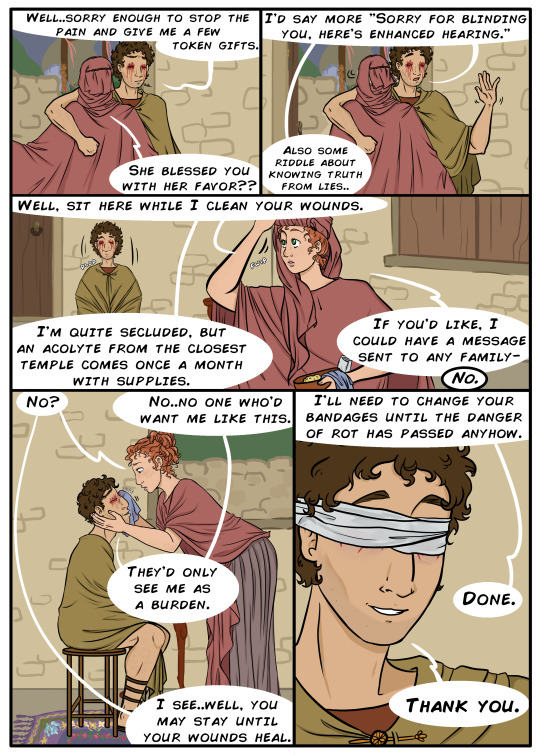



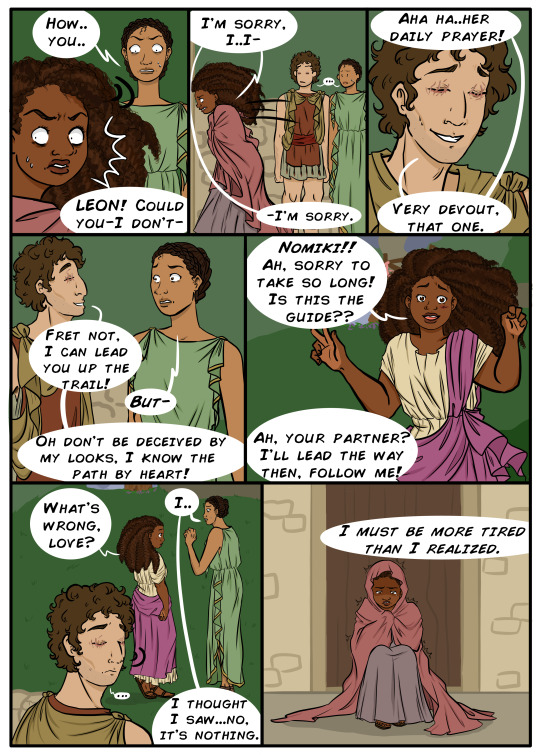

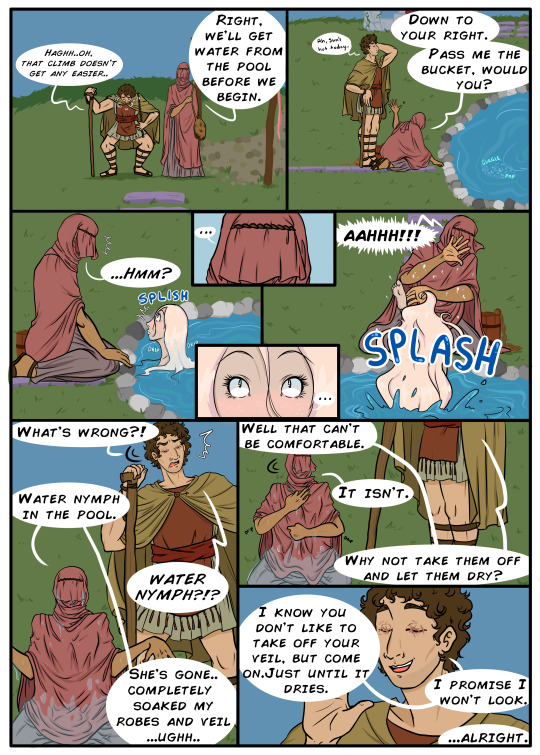
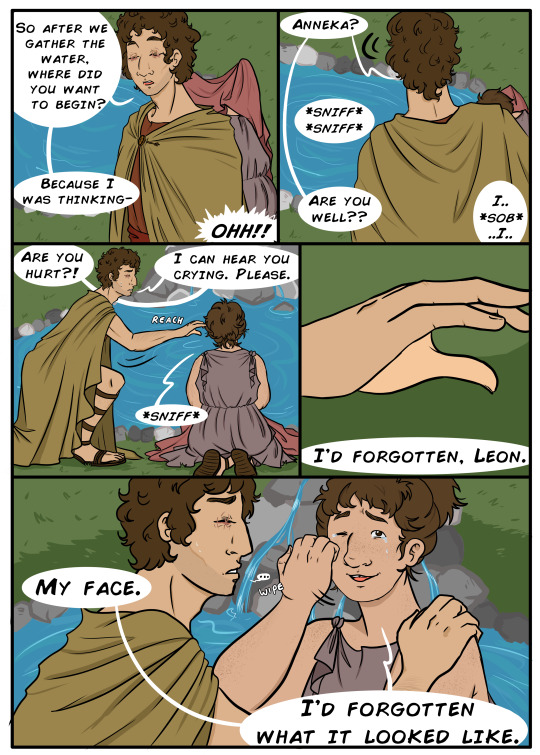

~The Most Beautiful Woman in The World~
Download on itch.io for extra content!
#my art#comic#it's about how when you love someone you think theyre the most beautiful person to exist!!!#it's also about me drawing a man in the sluttiest little miniskirt imaginable-who said that#i tried throwing hints throughout the story that yes the gods are doing the equivalent of making two dolls kiss#anyways hope u like it i know its quite long for a tumblr post teehee woops
4K notes
·
View notes
Text
Klaus (2019) Review & Analysis
I remember recently discussing with my fiancée how, though there have undoubtedly been a number of Christmas movies released in the last twenty years, none have really risen to the level of a “classic” – something you would want to watch every year as part of a tradition. It’s true I have not seen it, but still something tells me that 2008’s Reese Witherspoon vehicle Four Christmases is not on anyone’s annual watchlist… nor 2017’s Mel Gibson-infested Daddy’s Home 2. We concluded that the last “classic” was 2003’s Elf. And, while Christmas movies don’t have to mention Jesus or religion obviously, please don’t try to tell me that Frozen is a Christmas movie… it’s not! In some ways, given how secular things are, I began to wonder if there even was a market for holiday family fun movies, but of course, I’m an idiot because you can just make a whole movie about Santa Claus. Move over, Jesus, we gotta talk about the reason for the season!
Klaus released last holiday season on Netflix and at least in Chicago I saw billboards for it everywhere. Netflix went all in on promoting this as the next big Christmas movie and had some moderate success; they even grabbed an Oscar nom for best animated picture. Unlike most animated films these days, Klaus was made by neither DreamWorks nor Disney, and it shows. It lacks the refined polish of a Disney/Pixar feature, but also has a heart unlike a DreamWorks picture. The animation style can be best described as a hybrid of 2D and 3D (yet not quite 2.5D). At times the character models look like classic hand-drawn 2D models set within a mostly computer-generated 3D environment. But at other times, they look more 3D. It’s confusing to describe, and inconsistent to watch. It often felt like I was watching a compromise between a studio that wanted a distinct animation style but didn’t have the budget to fully realize it. Still, more often the not it’s a pretty movie.
More than the raw visuals, the movie has a fantastic sense of atmosphere… perhaps even too much at the beginning. Klaus is, in one sense, the story about how a lonely woodsman becomes the legendary Santa Claus, but for such a jolly premise, much of the film is shrouded in shadows and dominated by an oppressive, cold, snowy bleakness. In retrospect, this makes sense as the true triumph of Santa and “Christmas spirit” can only be best appreciated when it brings light to the darkest of places and times. Still, upon first viewing, I was quite surprised and shocked by the dark atmosphere and downright violent imagery on display at the beginning of the film, so much so that I was wondering if this really was a Christmas movie!
The darkness stems from the fact that our woodsman Klaus lives deep within the forest on a far north island, far far from the closest village which is a town called Smeerensberg and is famous for its never ending feuding and wickedness. It’s a genuine Nineveh of the North so it seems. The town’s feud centers around two rivalling clans (the film’s equivalent of the Hatfields & McCoys) and every villager belongs to one clan or the other. The two families’ feuds go back longer than anyone can remember (cave paintings exist that depict their feud), implying an original sin of sorts with the town being more born from hatred than spawning it. Hatred is so foundational that it infects every part of society. Unwilling to allow children to interact with the rival clans in classrooms, children just don’t go to school. Instead, they roam the streets playing pranks on old people and stabbing snowmen with carrots.
For the most part, Klaus lives his life separate from and unbothered by these unruly residents of Smeerensberg. What breaks his solitude is the arrival of a new post officer to Smeerensberg. More than a trivial side character, this post officer, Jesper Johansson, is surprisingly the main character of this movie all about the origins of Santa Claus.
Much like the residents of Smeerensberg, we the audience come to the film with a primary misunderstanding, much of what makes Santa famous today (the home invasion via chimney, the responding to letters, the reindeer-pulled sleigh) were the creative inventions of a spoiler-brat-turned-postman. So despite this movie being about the origins of Santa Claus, being a Christmas movie, you should have guessed that this will be some variant on Dickens’ classic tale. Jesper isn’t a classic Scrooge in that he doesn’t abhor Christmas, but he is self-absorbed, materialistic, and all-around not a great guy. He’s the spoiled son of a successful postal worker who controls a postal empire that looks more like an army. (The true fantasy of this movie has nothing do with sleigh bells and stocking stuffers… it’s the idea that the post office is a well-organized, well-respected, successful enterprise.) Anyways, recognizing his own son’s worthlessness, Jesper’s father decides to whip him into shape, ship him off to the God-forsaken land of Smeerensberg with an ultimatum: Jesper must process 6,000 letters from the town of Smeerensberg in a year or else be cut off from his father’s wealth. The problem? With how ugly the feud is in Smeerensberg, no one needs to write a letter to express their feelings when a cold snowball to the face (or worse) will get the point across quite clearly.
So now with the spoiled postal heir longing for silk sheets as he tries to survive out in the cold boonies, the movie gets a hint of the Emperor’s New Groove flavor… sans llama. It is only by sheer “chance” (we’ll get to that) that when Jesper visits the woodsman in a last ditch effort to find one person on the island who wants to send a letter, a piece of paper falls out of Jesper’s bag as he flees in horror of the woodsman (we’ll get to that). This piece of paper contains a drawing that a little boy made of himself locked in a high tower looking sad. In a very humorous scene, we had seen Jesper accidentally stumble across this drawing and then unsuccessfully try to scam the boy into giving him money so that Jesper could “mail” it back to him, rather than just give it back. Regardless, recognizing the little boy’s suffering, the woodsman decides to do something about it and enlists Jesper’s help. Luckily for the children of Smeerensberg, the woodsman has a barn full of toys. Yes, “a barn full of toys” is as creepy as that sounds and the films uses that creepiness to full effect when Jesper first meets the woodsman. The large, imposing, hooded, axe-bearing woodsman is far from the jolly fellow we know he is destined to become. He’s downright scary and given how violent the town of Smeerensberg is (Jesper almost dies when he first arrives because he’s tricked into ringing the war bell which sends the whole town into violent frenzy), we and Jesper are not wrong to assume the woodsman holds only ill-intentions. Essentially, the first meeting with the woodsman is supposed to be something akin to the reveal of the Beast in 1991’s Beauty & the Beast, a film so scary it sent my then two-year-old sister running out of theater in tears. Ultimately, I can’t speak for the mind of a child, but the tension for me here is certainly lessened by the fact that… well… we know the woodsman is Santa Claus. So even though Jesper is scared shitless and flees after meeting the woodsman, we know that there will be more to their story.
Still, even if not necessarily scary, the film does successfully shroud the woodsman in mystery, and his backstory is slowly and beautifully revealed throughout the film. I won’t spoil it here, but the script does a fantastic job of contextualizing the woodman’s stoic and aloof nature and explaining why that barn is so full of toys. The explanations come naturally and speak to a real human pain that I was not expecting from this film. In terms of emotion, the woodsman’s backstory almost reaches the opening montage to Up. ALMOST, I said, so put down the pitchforks!
So Jesper and the woodsman team up to deliver a present to that first child from the drawing. Or more accurately, the woodsman throws Jesper down a chimney to deliver a present while the woodsman looks on. The ensuing scene when the boy opens his present brought tears to my eyes. The woodsman (and we with him) watching the pure joy of a child receiving a present is truly nostalgic in its most literal sense. It hurts to see such joy, remembering that at one time you too could feel such joy from a hunk of plastic, and knowing you will never feel that way again. It’s a joy that few films outside of A Christmas Story with its the red rider BB gun really nail. Anyways, the little boy sees the woodsman through the window and finds his original drawing of himself locked in the tower which the woodsman leaves behind by accident. He surmises that the postman had devliered his drawing to the woodsman, and the woodsman responded with a present.
After that… well the rumor spreads wildly of the mysterious woodsman who comes down chimneys at night to give presents to children in response to letters. Now, the once dormant post office becomes a bustling hub of activity as children from all over flock to send letters to this Mr. Klaus. Kids even beg to go to school so that they can learn to write in order to get presents (much to the dismay of the disilliusioned teacher who long ago gave up on her dreams of teaching in a town where no child goes to school and had turned to being a fishmonger in order to pay the bills and one day afford to leave the town for good).
Gradually the children, who seemingly had no toys prior to Klaus and Jesper’s escapades, now joyously play together, regardless of which clan they belong to. Initially this upsets their parents greatly, but in the end it’s hard to really hate the parents of your children’s friends. The film promotes an age-appropriate and inspiring, if fanciful and naïve, notion that all the world’s problems would be solved if we all thought like children. As by spreading joy throughout the town, Jesper and Klaus inadvertently make the town a better place to live. It’s the theme of the film (not that they’re subtle about it): one act of good-will always begets another (or something like that). Still, all this doesn’t please the village elders, who abhor the change from the town’s hateful origins. They will ultimately serve as villains trying to put an end to all this gift-giving business.
Of course, there’s another villain of sorts, as well. Despite all the good he’s doing, Jesper is ultimately still motivated mostly by the notion of getting back to his old cushioned life. He is essentially using Klaus and preying on his kindness in order to launch himself back to a life of selfishness. It’s here the story feels most Dickensian, particularly in a scene where the school teacher (now love interest) acts functionally the same to the ghost of Christmas present and takes Jesper to the city center to see for himself the love and joy that he has helped bring to the world. But, still his desires to go home are strong, and, of course, he keeps them a secret. So between Jesper’s inner conflict about where he belongs in life and the external conflict of the community trying to fight back against a change in its culture, the film naturally comes to climax when the two conflicts meet and Jesper must confront both challenges at once.
What I’ve realized in writing this review … is that I am very impressed by the plot’s complexity and depth. The film weaves together at least three solid story arcs (Jesper’s coming-of-age/Scrooge-like-change-of-heart, Smeerenberg’s bubbling kindness revolution, and the woodsman’s aged hero who finds redemption and purpose after so many years alone). That all three feel fully supported and without any bloat is a testament to its absolutely solid writing, and for a kid’s film no less! Furthermore, the “origin” story genre can sometimes fall flat as it can just feel like the writers are writing more Wikipedia entries, explaining how every little aspect came to be more than just telling a good story. I call it the Han Solo trap. As for Klaus, the little tidbits about why Klaus uses reindeer and not horses, who the “elves” who work his workshop are, always clever and grow organically from the plot.
Plus, despite my opening doubts regarding whether the dark tone really fit a “Christmas” movie, the film very capably captures the joys of the Christmas season. Like Christians think about Jesus, Klaus/Jesper bring a world of light into a world of darkness. The film teaches about the importance of creating a loving community, of being selfless, and most importantly of respecting the spiritual aspect of the season. Even if this is a decidedly capitalistic/entrepreneurial movie, the film is not without a spiritual side. The previously mentioned “chance” of the woodsman seeing that initial drawing of the boy locked in the tower is no chance at all. Instead, throughout the film we see that the woodsman is “haunted” in a sense by a ghostly wind that points him in the path of righteousness. The film has its own explanation for what the force behind the wind is, but it is not too far of a stretch to point out the similarities between the wind and the Christian idea of the guiding Holy Spirit. Now, I’m not going to sit here and tell you that the woodsman represents God the Father and Jesper God the Son, (or is Klaus more the Christ figure?) because I think this movie is decidedly not Christian, but more I just want to highlight that I enjoyed that the film allowed for the presence of spirituality, which moves this film from the realm of secular kindness to one that recognizes the power and presence of some spiritual goodness, aligning with how many think of the “Christmas spirit.”
Now, let’s be clear, this is a fun, family classic, but it’s not a perfect film. In fact, I downright disliked the first twenty to thirty minutes, for the aforementioned tonal reasons, but also because I really disliked Jason Schwartzmann’s voice acting in the lead role of Jesper. My dislike lessened with the introduction of the woodsman, but it never went away fully. I can’t help but think this movie would be better with a different actor voicing Jesper. Everyone else does an adequate job with the voice work. J.K. Simmons as Klaus takes on an almost Batman-like stoic gruffness, and Rashida Jones as the teacher and love interest is just fine. And, again, I never really fell in love with the art style and it sometimes distracted me, and I found the soundtrack, particularly the main song to be rather lame and too much “of its time” than the typically timeless, more Broadway productions that Disney/Pixar put out. Still, director Sergio Pablos has done something I did not think possible. He and his team created a *new* Christmas classic, one that I’m sure will be played on an annual basis in many households across the world.
***1/4 (Three and a fourth stars out of four)
16 notes
·
View notes